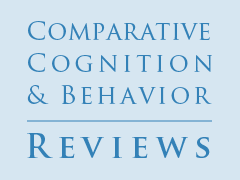An Evolutionary Framework for the Acquisition of Symbolic Cognition by Homo sapiens
by Ian Tattersall,
American Museum of Natural History
Reading Options:
Download/Read PDF | Add to Endnote
Abstract
Human beings are unique in their possession of language and symbolic consciousness. Yet there is no doubt that modern Homo sapiens is descendedfrom a nonlinguistic, nonsymbolic ancestor. How might this extraordinary transition have occurred? Slow fine-tuning over the eons is not the answer: the apparent steadiness in hominid brain enlargement over the past two myr is probably an artifact of inadequate systematics, while behavioral innovation was highly episodic in human evolution, and nonsynchronic with anatomical innovation. Evidence for expression of symbolic behaviors appears only very late – substantially after Homo sapiens had arrived as an anatomical entity. Apparently the major biological reorganization at the origin of Homo sapiens involved some neural innovation that “exapted” the already highly evolved human brain for symbolic thought. This potential then had to be “discovered” culturally, plausibly through the invention of language. Emergence rather than natural selection is thus implicated in the origin of human symbolic consciousness, a chance coincidence of acquisitionshaving given rise to an entirely new and unanticipated level of complexity. This observation may undermine claims for “adaptedness” in modern human behaviors.
Keywords: human evolution, language, cognition, symbolism, symbolic consciousness
Tattersall, I. (2008). An Evolutionary Framework for the Acquisition of Symbolic Cognition by Homo sapiens. Comparative Cognition & Behavior Reviews, 3, 99-114. Retrieved from https://comparative-cognition-and-behavior-reviews.org/ doi:10.3819/ccbr.2008.30006
